Hoka Mafate Speed 4
Test Location: Durango, CO
Test Duration (so far): 52 miles
Stated Stack Height (Men’s): 33 mm (heel) / 29 mm (forefoot)
Stated Heel-to-Toe Drop: 4 mm
Stated Features:
- Dynamic tongue and vamp
- Vibram Megagrip with Litebase construction and 5 mm traction lugs
- Single layer woven jacquard mesh upper
- PROFLY+ construction
- All-new lightweight, resilient foam
Stated Weight per Shoe (US Men’s Size 9): 295 g / 10.4 oz
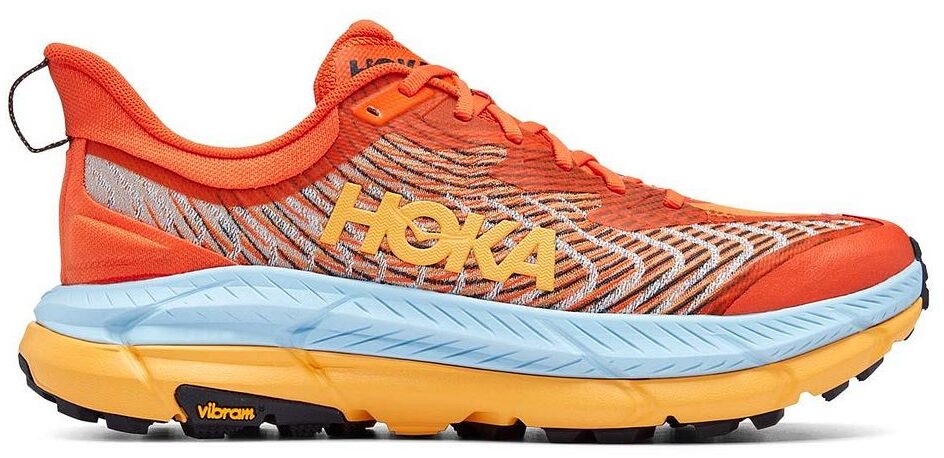
MSRP: $185
Size Tested: US Men’s 9.5 / EU 43 1/3
Reviewer: 5’9”, 148 lbs / 180 cm, 67 kg
Intro
In my first ultra, the Grand Traverse Run from Crested Butte to Aspen, CO, I wore a pair of the Hoka Mafate EVO 2 — a shoe designed with speed, plush-yet-responsive cushioning, and nimbleness in mind. It was a great choice for the race (one of the things that did go right in that race) and went on to be a staple in my rotation that summer. The trail shoe line from Hoka has been largely dominated by the incredibly popular (and for good reason) Speedgoat series, which is in its 5th generation now. A solid all-arounder and a shoe that seems to work for a huge variety of runners, the Speedgoat has always been a long-distance-focused shoe that has outshined the Mafate lineup, which has a more race / speed focus in mind. However, that may just change with the Mafate Speed 4.
Fit
The Mafate Speed 4 is one of those shoes that elicited a pleasurable groan from me the first time I slipped it on. From the semi-gusseted tongue to the use of jacquard mesh in the upper that creates a soft yet supportive foot-hugging feel, the Mafate Speed 4 corrects a few of the gripes I had with the newest iteration of its counterpart in the Speedgoat 5. As with all Hoka shoes, I went with a US Men’s Size 9.5, which fit true to size and felt perhaps just a tad longer in length than the Speedgoat (it wasn’t super noticeable and didn’t affect the shoe’s performance, but it’s worth mentioning). The toe box is an average width, airing on the side of more narrow than wide. With speed and nimbleness in mind, the toe box creates more of a “wrapped” feel in the forefoot that, for my medium-width foot, felt just right. After my first 10 miles in the shoe, I immediately thought how great of a 50K race shoe this would be. It has the fit and feel that falls into that balanced point of feeling quick underfoot while still having plenty of cushion to go the distance, all the while providing welcomed energy return the entire time.
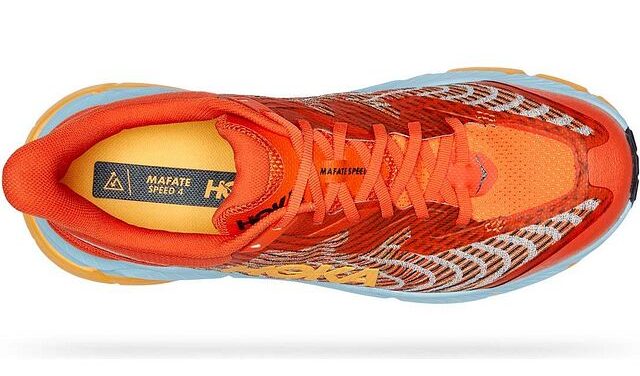
Weight
The Mafate series has been on a diet since its previous iteration in the Mafate Speed 3, which came in at 309 g / 10.9 oz in a US Men’s Size 9. Trimming off 9 g while still making significant outsole, upper, and midsole improvements is a very welcomed change to the 4th iteration of the Mafate series. Clocking in at 295 g / 10.4 oz in a US Men’s Size 9 is about 6 g heavier than that of the Speedgoat 5. This ever-so-slight increase in weight is likely due to a more pronounced toe bumper than the Speedgoat, as well as the dual-density midsole foam the Mafate Speed 4 utilizes (very worth the 6 g, in my opinion). With “Speed” in the name, seeing a (slight) drop in weight allows this shoe to carve out a place of its own in Hoka’s lineup, next to the Speedgoat 5 and Stinson ATR 6. While not a super light option in comparison to some other models in the maximal trail shoe category, the Mafate Speed 4 feels agile and nimble on foot and has a snappier turnover rate than the Speedgoat series. For reference, here’s how the Mafate Speed 4’s stated weight compares to the stated weights for some other similar models. All weights are based on a US Men’s Size 9.
260 g / 9.2 oz — Salomon Ultra Glide
284 g / 10.0 oz — Topo Athletic Mtn Racer 2
289 g / 10.2 oz — Hoka Speedgoat 5
292 g / 10.3 oz — Saucony Xodus Ultra
295 g / 10.4 oz — Hoka Mafate Speed 4
298 g / 10.5 oz — Brooks Cascadia 16
300 g / 10.6oz — Altra Lone Peak 6
300 g / 10.5 oz — La Sportiva Jackal
310 g / 10.9 oz — La Sportiva Akasha II
310 g / 10.9 oz — Dynafit Ultra 100
312 g / 11.0 oz — Nike Wildhorse 7
In comparison with these other trail shoe models above, the Mafate Speed 4 has one of the highest midsole stack heights (33 mm at the heel and 29 mm in the forefoot). The magic of the shoe is that it does feel significantly lighter on foot than it may read on paper. This is largely due to the bouncy, lively nature of the midsole, which I found to have excellent propulsion with each footstrike. They say numbers don’t lie, but in this case, I don’t think they tell the whole story, either.
Upper
When I saw that the new edition of the Mafate would feature jacquard mesh, I’ll admit I was a bit hesitant. I have had a lot of hit-or-miss experiences with similar jacquard mesh uppers, including the example on the Speedgoat 5. Whether the issue was a lack of foothold, stretching over time, or stretching when wet, I have not found a shoe that utilizes the material that well. However, here in the Mafate Speed 4, I found the foothold to be secure and confidence-inspiring. The fully gusseted, lay-flat tongue and stretch laces did a great job of keeping debris out and locking my midfoot in place. Additionally, while it’s still premature to make any definitive claims about the upper’s durability, it is confidence inspiring so far. The early iterations of the Mafate used super resilient “Matryx” fabric for the majority of their uppers, and the type of jacquard mesh Hoka uses in the Mafate Speed 4 is reminiscent of that material, both in texture and feel.
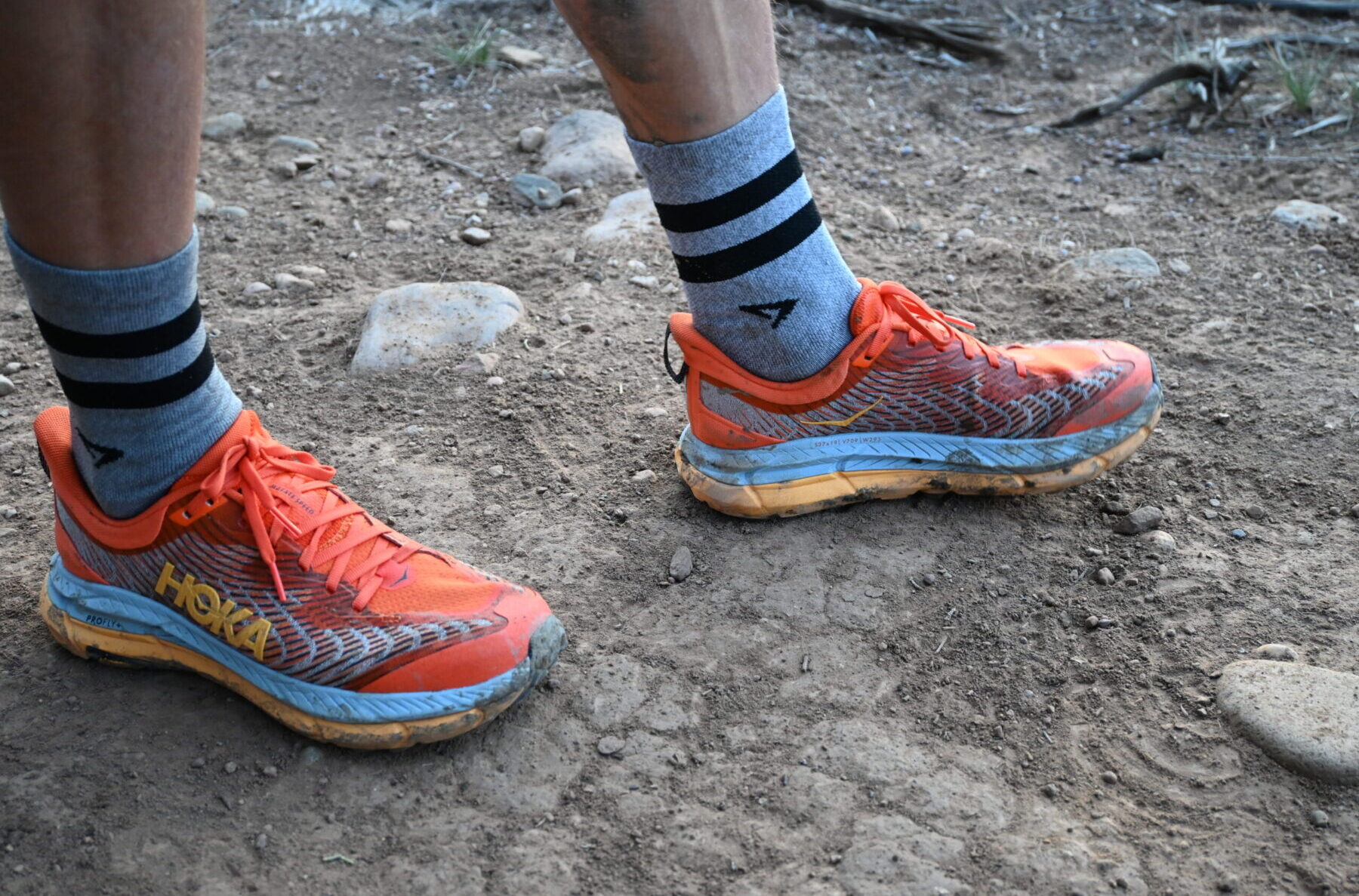
Midsole
The biggest reason to pick up a pair of the Mafate Speed 4 over the Speedgoat 5 or another shoe in Hoka’s lineup is undoubtedly for its midsole. Before getting the Mafate Speed 4 on my feet, I would have said that the Saucony Endorphin Edge (which features a “Carbitex” plate) is the closest I have felt a trail shoe feel to something that’s as lively as a road shoe while still having the versatility to perform well on moderately technical trail — until now. Where the Saucony Endorphin Edge falls short of the Mafate Speed 4 is its ability to feel stable at speeds on moderate to technical terrain. There lies the beauty of the “PROFLY+” midsole in the Mafate Speed 4; it feels almost as if there is a plate in the shoe without having the instability that a plate can create. PROFLY+ is Hoka’s supercritical, high-density foam that should hold up a bit better to wear than more traditional EVA foam (which is found in a lot of models by Hoka, including the Speedgoat 5). If you have had a chance to try either the Hoka Mach 4 or 5 on the road running side of their lineup, you’ve already experienced the energetic and lively nature of PROFLY+. The Mafate 4 incorporates a layer of it placed on top of a more traditional style of EVA foam. This arrangement (i.e., denser foam on top of a softer, more cushy feeling foam) creates a well-balanced ride that generates plenty of propulsion while still retaining the high level of cushion mile after mile that we have come to appreciate from Hoka.

Outsole
The outsole of the Mafate Speed 4 is one of the highlights of this shoe. Featuring 5 mm lugs made with Vibram Litebase Megagrip, the outsole has proved to be excellent in everything from dry, rocky trails to muddy, in-between-season dirt here in the Rocky Mountain West. By incorporating the Litebase version of Megagrip from Vibram (which is reportedly 30% lighter and 50% thinner than standard Vibram), the shoe can cut more weight in the outsole while not sacrificing superb grip and confident footing on a huge variety of trail conditions.
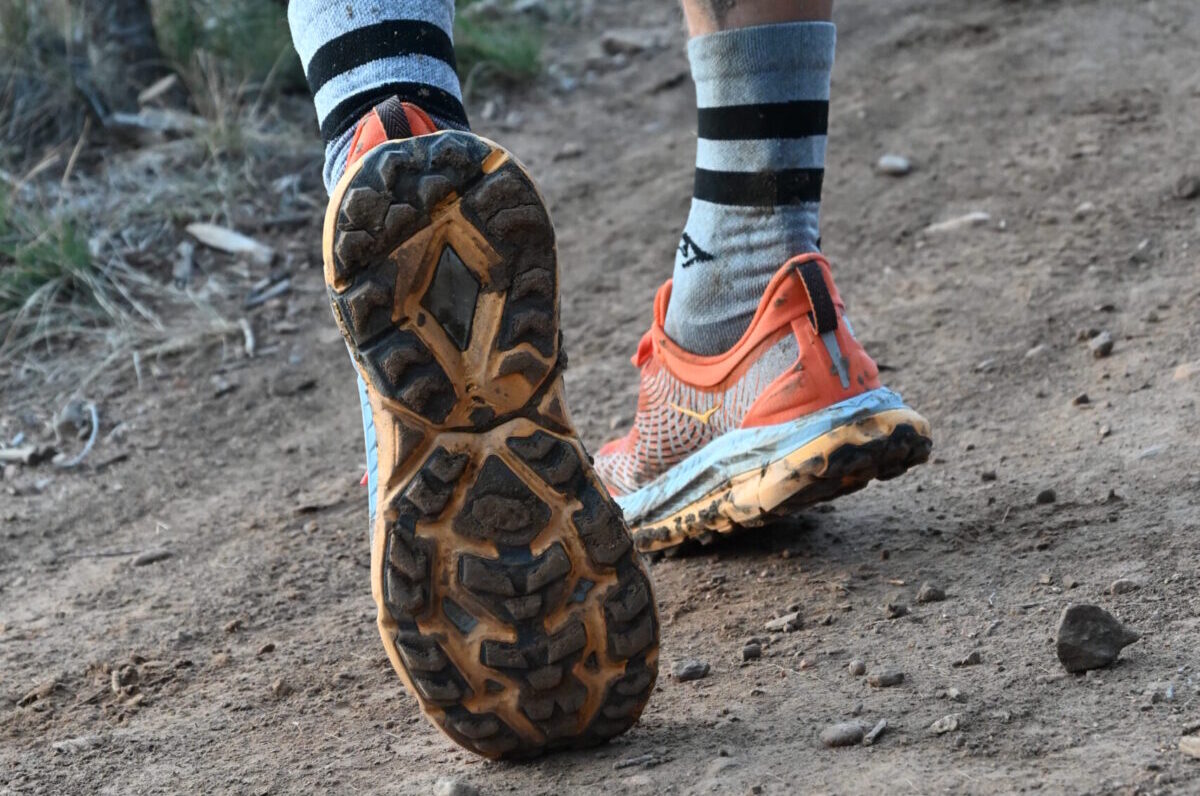
On Trail
During my testing period, I have primarily used the Mafate Speed 4 for town trails here in Durango, which are mostly a mix of rocky, technical sections as well as rolling singletrack. This time of the year, the high country trails are snowed over, so having the Mafate Speed 4 to make my daily loop runs more exciting has been a welcomed change. Because it has a stack height on the higher side, I do think twice before taking the Mafate Speed 4 on super technical terrain; the lack of ground feel can make an ankle roll more likely. Rather, this shoe thrives on moderately technical terrain where I could really open up and hold a faster pace.I can definitely see myself reaching for this shoe in some of my summer races under 100K — I think as a marathon to 50-mile shoe, this would be a fantastic option. For me, this shoe has replaced the Speedgoat 5 as my choice for daily runs, a change motivated mostly out of an appreciation for the Mafate Speed 4’s lively feel and superior energy return while running. If you are someone who habitually rolls your ankles, a lower-stack shoe would likely be a better choice for more technical terrain, although I felt that the wider base of the Mafate Speed 4 did feel quite stable, given its stack height. This is going to be a great tweener shoe option for folks looking for a versatile option that can check a lot of boxes, whether that be for a runnable 50K or just daily training.
Durability
Thus far, the Mafate Speed 4 has received high marks from me in the durability category. Even after just 50 miles in a shoe, I’ll often see some wear on the outsole or on any exposed midsole. However, that’s not been the case with the Mafate Speed 4. Both the outsole and midsole are in like-new condition and show no wear whatsoever. The midsole really came to life after about the 30-mile mark and has felt better and better with each run. There has been no fraying or signs of wear on the upper thus far, proving that the implementation of this specific type of jacquard mesh is likely a stronger weave than in other models incorporating a similar material. I could easily see this shoe reaching the 400+ mile / 650 km mark, thanks in large part to its Vibram Litebase Megagrip outsole. As always, if anything changes I’ll make sure to chime back in with updates.
Who’s It For?
I see this shoe being a solid daily trainer for folks who are looking to pick up the pace a bit during training blocks, late-season joy runs, or trying to snag that local Strava segment. Is this a shoe that will be my mountain running shoe I use in the San Juans all summer? Likely not, but that is not its intended purpose. It is not a scrambling-friendly shoe but it is a shoe that is pretty good for everything else. It’s an option that provides a little more spark and excitement to my close-to-town daily running loops while still offering enough cush for longer efforts. Given that the Speedgoat 5 and the Mafate Speed 4 have identical stack heights, if you are someone who really enjoys the protection and feel of the Speedgoat series but just wants a little more bounce and liveliness in the midsole, or if the upper on the new Speedgoat 5 did not work for you (which was the case with many folks I know), then converting to the Mafate Speed 4 should be an easy transition for you.
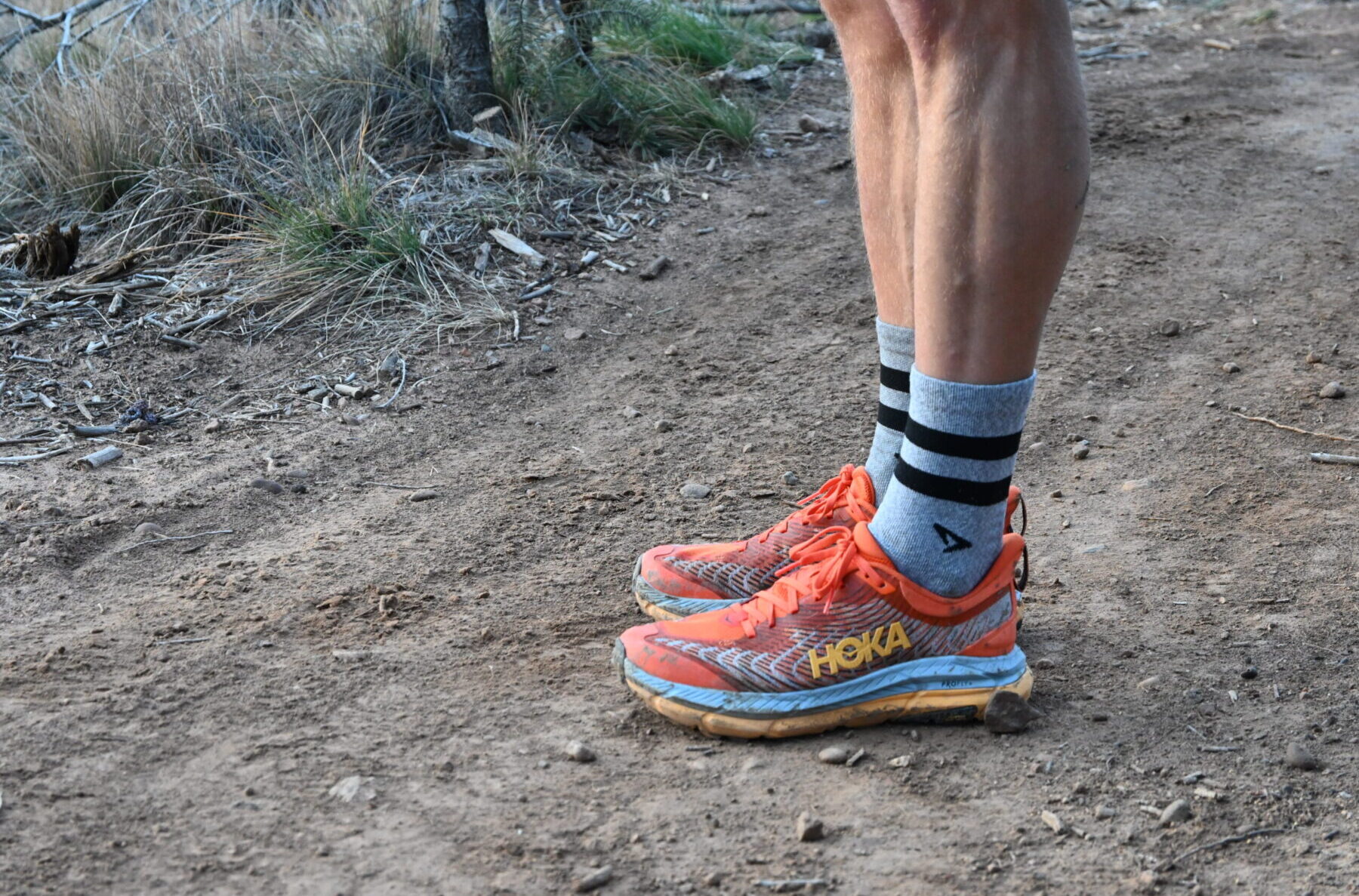



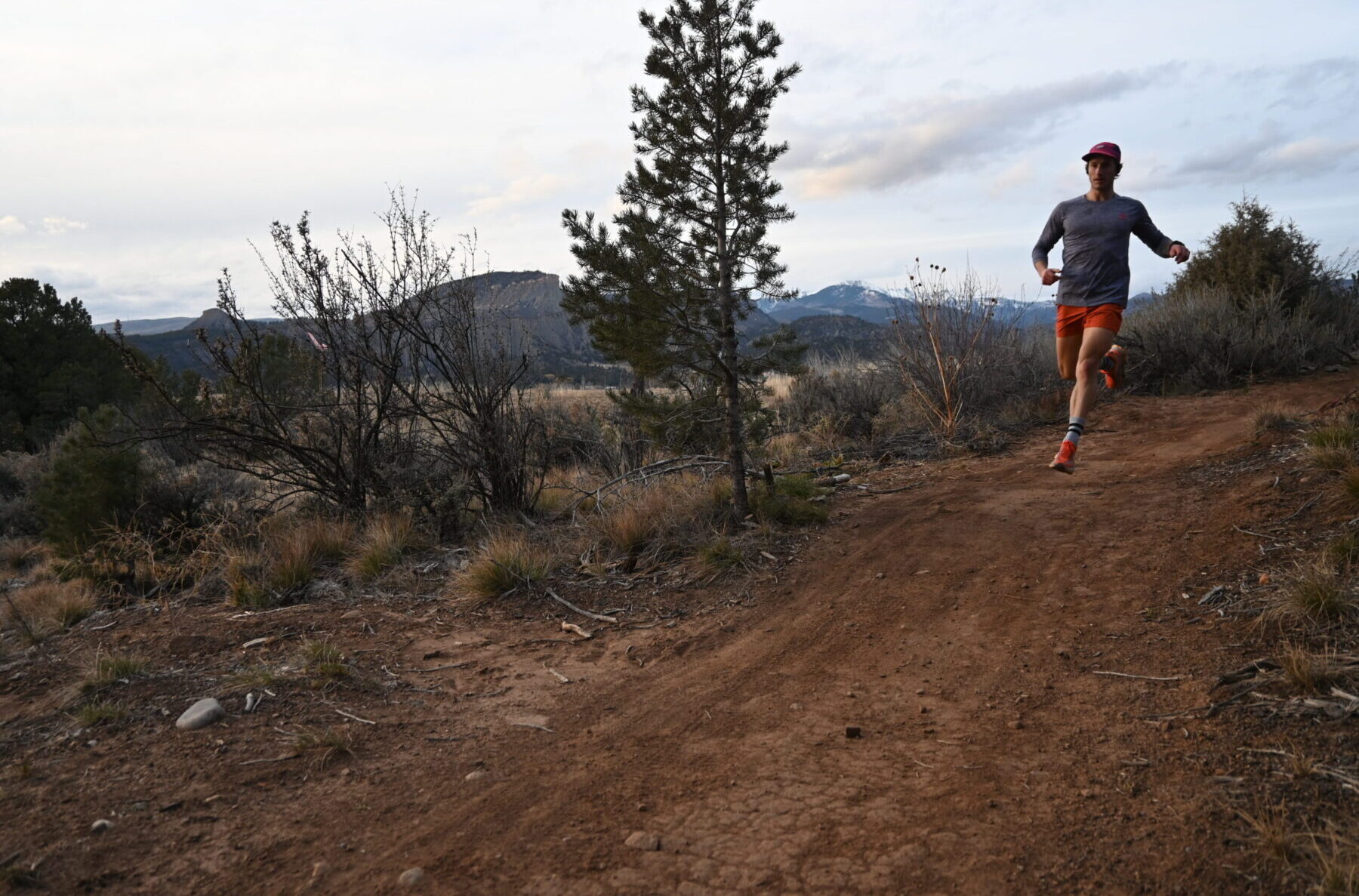

I’m also only in the initial stages of running in these and so far so good on trails, huge confidence on mixed terrain with no feelings underfoot of bruising when on sharp rocks etc. felt bigger in the toe box than the Goat 5 and closer in that fist out of the box fit to my usual Arahai (sp?). The mesh upper does seem to be a suitable magnet for various burrs and other brambles and the like. I would still love them to bring back the Stinson Evo from like 10yrs ago, they went everywhere and did everything..
Minor update, just ticked over 50kms in them and the second eyelet has torn straight through the lace hole unfortunately. Will get another pair and hope this is just an unfortunate material blip as they feel so good as they were just settling in, the sole is incredible for confidence on mixed trails..
Hope you have better luck with the next pair- never experienced anything like that so hopefully just a bad egg. Enjoy!
Top review, completely agree, great shoe !
For sure! Thanks for checking out the review Ingo!
I also had the 2nd eyelet tear straight through but this was after 320 miles. The midsoles felt like they had at least another 150 in them. This is another area where the Mafates are an improvement on the SG5. Whereas my prior 2 pairs of SG5s lasted only 300ish, if not for the torn eyelet, the Mafate 4s will probably get you 500.
Torn 2nd eyelets seem to be a thing with these. The first eyelet is much more reinforced than the second, and it seems like a combination of the strain from ankle flexion plus the orientation of the lace in the eyelet create a failure point. Only logged 130 miles before this occurred. Great shoe otherwise, just need to reinforce the eyelets.
400 KM in, the shoe still feels great but i just had my first small tear in the upper, just from running though, i did not hit anything.